On this page:
What is a car parking structure?
Car parking structures are buildings used solely for car parking or mixed with other uses, and may provide parking for residents and commercial tenants, shoppers and visitors. They can be constructed above or below ground.
Car parking structures cater for both vehicle and pedestrian movement, however, pedestrians may be required to share paths with vehicles to reach a lift or stairwell, which can be a safety hazard.
Why is it important?
Car parking structures provide secure places for shoppers, residents and workers to store cars and are an efficient use of land compared to car parking lots.
Well designed car parking structures provide both efficient access for cars from the street and within the structure, and also provide clear, safe and direct pedestrian circulation within car parking area, and at exits.
5.4.1: provide conveniently located car parking structures
- Locate car parking structures in proximity to the activities they support.
- Where possible, share the car parking facility between multiple neighbouring uses.
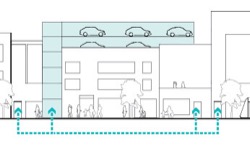
Tip: locating car parking structures a short walking distance from a number of activities encourages walking and extends the hours of use.
5.4.2: ensure car parking structures support an active and safe interface with the street
- Where practical, locate larger car parking structures below ground or within buildings or wrap them in a residential or commercial use.
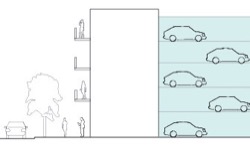
Tip: locating car parking structures above or below ground provides opportunities for other active uses such as shops or dwellings at street level. - Incorporate active uses into the building frontage of car parking structures.
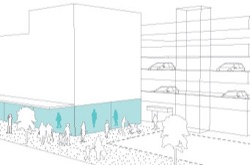
- On the principal street façades of the car parking structure, detail the walls to provide an interesting appearance.
Tip: detail on a car parking structure’s external walls may include, for example, decorative cladding, artwork, signage or graphics.
- Protect sensitive adjacent uses from vehicle noise, vibrations and emissions.
5.4.3: maximise informal surveillance opportunities within car parking structures
- Locate pedestrian entrances to car parking structures in convenient and visible locations at ground level on an active street frontage.
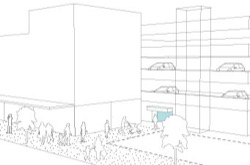
Tip: ground level shops or attended cashier stations provide opportunities for informal surveillance, while above–ground entries (bridges or overpasses) or underground (underpasses) can reduce the level of passing pedestrian traffic. - Minimise the number of pedestrian entry and exit points to multi–level car parks.
Tip: multiple entry and exit points result in dispersed pedestrian traffic. Concentrating the pedestrian movement at a single exit allows for greater informal surveillance and facilitates way finding.
- Locate pedestrian ramps, stairs and lift entrances in areas that are easily seen from internal pedestrian paths.
- Locate stairwells and lifts at the perimeter of the car park and clad walls with transparent materials.
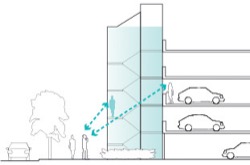
Tip: Transparent external walls can improve safety levels by creating opportunities for informal surveillance of people in the car park and in the stairwell.
5.4.4: ensure safe and convenient pedestrian movement around and within car parking structures
Refer to Standards Australia technical guidance on car parking and access ways.
- Locate vehicle entrances to car parking structures away from pedestrian priority streets and public transport routes.
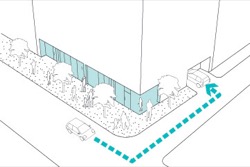
Tip: locating vehicle entrances and service access to car parking structures to the rear or side of the building will minimise crossovers on pedestrian priority streets, and avoid vehicles queuing across public transport lanes - Arrange vehicle exits so that vehicles leave car parking structures in a forward direction and do not block pedestrian paths when exiting.
- Where car lifts are employed, provide sufficient space for car queuing off the street and away from pedestrian path.
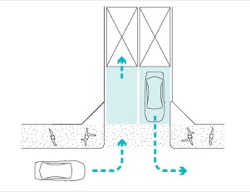
Tip: vehicles queuing across pedestrian paths pose a hazard and inconvenience to pedestrians - Provide and locate bicycle parking close to vehicle entry points, with easy access to the public area of the car parking structure.
Tip: minimising the distance bicycles need to travel within the car parking structure reduces cyclists’ exposure to moving vehicles – refer Victoria Planning Provisions clause 52.34 Bicycle Facilities
- Locate visitor and disabled parking close to the vehicle entry and with easy access to pedestrian paths and the public area of the car parking structure.
- Provide dedicated and marked pedestrian paths in busy areas within car parking structures.
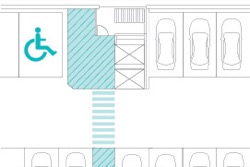
- Use colours, lighting and numbers as part of a way finding system within the car parking structure.
Page last updated: 28/10/25